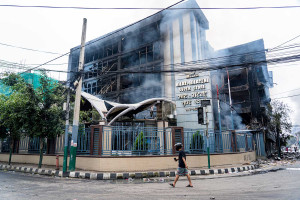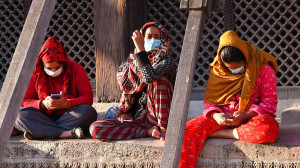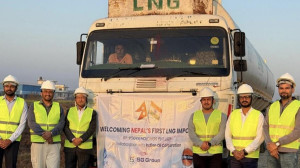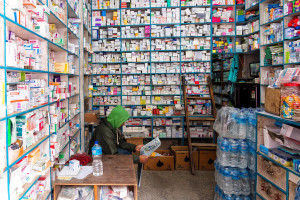Money
Gatisheel Party unveils agri concept paper promising self-reliance and jobs
The party plans to establish small and large-scale agricultural research and processing centres across the country to enhance productivity, ensure fair market access.
Post Report
The Gatisheel Loktantrik Party on Wednesday released its national concept paper on agriculture, outlining an ambitious plan to modernise Nepal’s farming system and make the country self-reliant in food production. The announcement follows the party’s recent release of concept papers on tourism and civil aviation.
The party, launched by Buddha Air owner Birendra Bahadur Basnet, said the “dynamic agriculture” model aims to establish community-centred agricultural enterprises and create thousands of jobs. The programme envisions developing a network that connects production, processing, and marketing to strengthen the rural economy and drive industrialisation through agriculture.
Although the paper was initially scheduled to be unveiled in Janakpur, adverse conditions there prompted the party to hold the launch event in Kathmandu instead.
Basnet said that once his party assumes power, the programme will first be implemented in five pilot locations across four provinces—two in Koshi, one each in Madhesh, Bagmati, and Lumbini—and later expanded to 15 sites nationwide.
According to the concept, the party plans to establish small and large-scale agricultural research and processing centres across the country to enhance productivity, ensure fair market access, and create employment opportunities. Priority areas include rice, maize, vegetables, and livestock farming.
“This initiative is expected to increase self-reliance and strengthen the rural economy,” Basnet said.
Agro expert and party member Ram Chandra Khanal said farmers’ current average annual income of around Rs125,000 could rise to Rs200,000 under the new system. The paper estimates that paddy production could grow by 30 percent and maize by 50 percent once modern methods are introduced.
The programme also envisions greater access to agricultural credit and insurance, helping reduce farmers’ costs and risks. With improved production and processing systems, the party expects a significant boost in rural earnings and national economic contribution.
The long-term goal, according to the paper, is to create a self-reliant agricultural system by equipping farmers with technology, training, and markets. The plan includes an estimated Rs4.55 billion investment to set up modern processing centres nationwide.
The dynamic agriculture model integrates farming, processing, and marketing into one system, aiming to transform agriculture into a base for industrialisation and job creation. The party proposes legal arrangements to facilitate agreements between landowners, tenants, and farmers, as well as interest subsidies for mills.
Basnet said the programme’s implementation would follow four guiding principles: prioritising farmers, cooperating with local governments, partnering with the private sector, and learning from successful models.
Nepal’s agricultural productivity, the paper notes, continues to decline due to poor access to seeds, fertilisers, irrigation, and markets, as well as fragmented landholdings and weak policies. The biggest challenge remains that the “value of farmers’ sweat does not reach their hands.”
Drawing from his experience in Morang, Basnet said his team has improved paddy production, processing, and marketing by collaborating with farmers and private investors. Arju Rice Mill in Morang, with a capacity of four tonnes per hour, works directly with farmers cultivating about 3,000 bighas of land. The mill buys, collects, processes, and pays for paddy within 48 hours, improving both credibility and income.
Rising demand for rice under the Arju brand has led the company to purchase paddy worth around Rs300 million from Madhesh Province alone. The same model is now being expanded to include maize, mustard, and livestock farming to ensure stable, multi-crop incomes for farmers.
According to Basnet, the annual income from one bigha of land has risen by 25 to 40 percent. With integrated multi-crop farming—rice, maize, and mustard—farmers can earn up to Rs200,000 per bigha annually.
“Our new concept will make farmers shareholders in the mills,” Basnet said, adding that the proposed 16-tonne modern rice mill will be based on 15,000 bighas of cooperative farming. The party plans to start five mills in the first phase and expand to 15 across the country.
These centres will also provide machinery rental, seed and fertiliser supply, feed and compost production, and processing services—allowing private entrepreneurs to participate.
Once all 15 mills are operational, the programme will systematically link about 230,000 bighas of farmland, create an estimated 15,500 jobs, and replace imports worth roughly Rs70 billion annually.




 10.12°C Kathmandu
10.12°C Kathmandu












%20(1).jpg&w=300&height=200)
